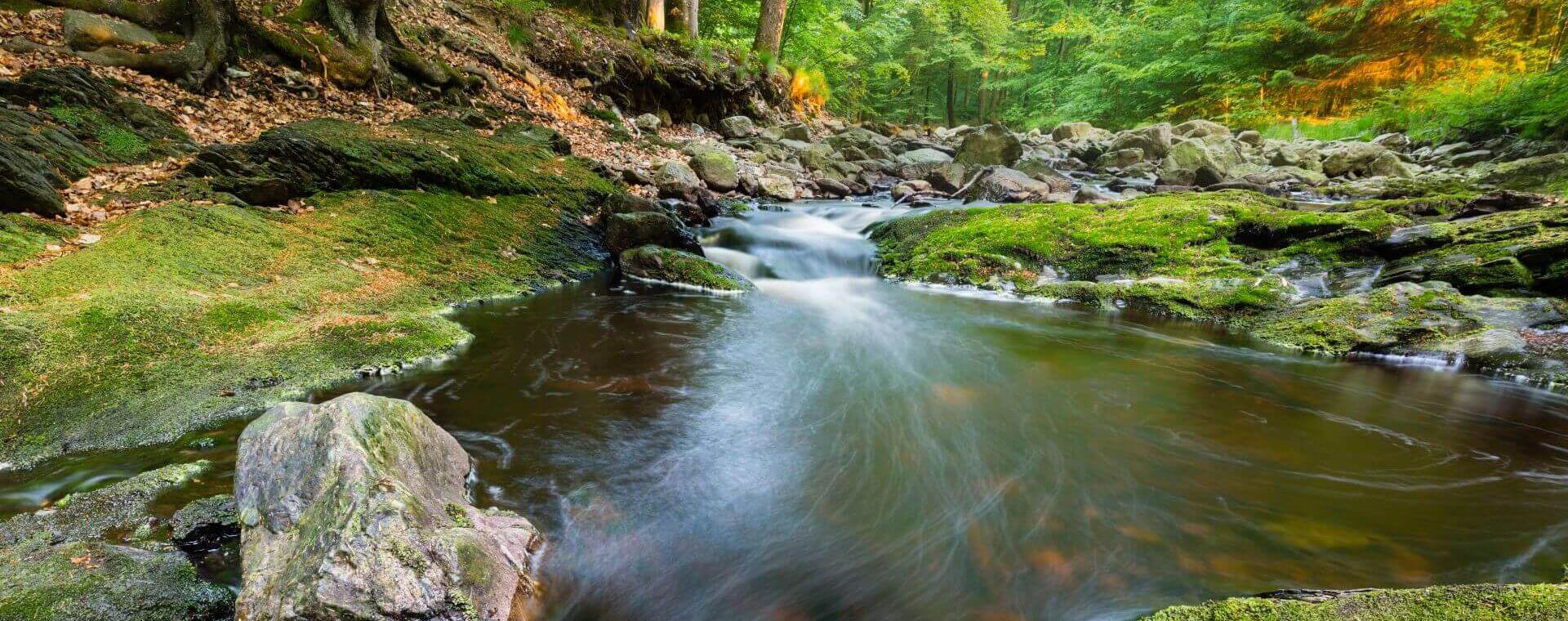This blog post is the first of a three part series on River Ecology & Conservation by Christine Pickens, PhD.
At Unique Places to Save, we put a special emphasis on protecting aquatic resources. One of the most prominent aquatic resource features of the United States landscape is the vast network of rivers. In fact, the continental United States has over 350,000 miles of streams and rivers.
Since rivers vary greatly in size and characteristics from their source to their endpoint, it can be helpful to examine them by grouping them by Strahler stream order.
What is Strahler Stream Order
Strahler stream order is a numeric labeling system that indicates the level of stream network branching from the top down. That means the uppermost, unbranched streams furthest from a river’s endpoint are first order streams.
When two first order streams join, they form a second order stream and so on. The Cape Fear River in North Carolina is a seventh order stream. The Mississippi River is at least a tenth order stream.
About 58 percent of stream miles in the continental United States are considered headwaters, which include first order streams.
What are Headwaters
Headwaters are the beginnings of rivers. Headwaters include all of the
- first-order streams,
- rain-dependent (ephemeral) streams,
- seasonal (intermittent) streams,
- ditches, and
- springs
that flow at least part of the year towards a main river channel. Since the majority of stream miles are considered headwaters, these are also the streams that have the greatest interaction with the surrounding land.
While not all headwaters are alike, there are, as explained by Michael Mallin, an expert in river ecology and water quality, some general characteristics that are similar for headwaters, particularly those that start in mountains.
First, these streams typically have narrower channels, rocky substrates and the steepest gradient when compared to downstream channels. This results in turbulent flows that are highly variable throughout the year and often tied to precipitation such as rainfall and snowmelt. Turbulent, variable flow also makes these streams erosional.
In addition, higher elevation and shade from the adjacent tree canopy, if present, help to keep headwaters cool. The combination of physical characteristics for headwaters supports a food web that impacts all the downstream water.
What Makes Up the Food Web of Headwaters
One of the interesting features of headwaters is whether the basis of the food web is driven by photosynthesis or by the breakdown of organic matter like fallen leaves and twigs. And for some headwaters, this can shift seasonally. Headwaters that get sunlight year round or during the winter after leaves fall generally have food webs driven by photosynthesis.
Algae and cyanobacteria that have the ability to cling to surfaces of rocks and plants serve as the next level in photosynthetic-driven headwater food webs because these organisms can withstand variable, turbulent flows.
Headwaters that are shaded most of the year generally depend on microbes, bacteria, and fungi as the next level in those food webs. These organisms break down leaves, twigs, and other organic matter to provide energy for higher order consumers..
The algae, cyanobacteria, microbes, bacteria, and fungi are then eaten by grazers, which are macroinvertebrates that have specialized mouths adapted to scraping food off of surfaces. Snails and certain mayfly larvae are examples of grazers.
In addition, shredders, which are macroinvertebrates that tear up and consume leaves, twigs, and other coarse organic matter, making it available to species downstream. Caddisfly and stonefly larvae are examples of shredders.
Grazers and shredders serve as prey for small fish that typically have higher metabolisms that help them adapt to turbulent flows and cooler water. Taken together, the complex food webs of headwater streams are the basis for downstream food webs.
Why Protect Headwater Streams
Headwater streams are highly integrated with surrounding land use. Due to their small size, they are easily blocked or disturbed by driveways or small roads. Improperly sized or installed stream crossings can also block headwater flow. Headwaters also receive a lot of stormwater runoff and are exposed to pollutants carried by runoff.
Some headwaters don’t have year-round flow, and lack strong legal protections in some areas. Finally, with a rapidly warming climate, there’s nowhere higher or colder for headwater stream organisms to migrate.
What are the Benefits of Conserving Headwaters
Headwaters provide numerous benefits! These streams provide local flood protection and they filter pollutants and excess nutrients. Headwaters are very important for nutrient cycling and supporting
- food webs,
- habitat and
- wildlife downstream.
Headwaters also help to recharge aquifers. These small streams also serve as corridors for migrating wildlife. Headwaters are also critical to the United States drinking supply. Over one third of Americans rely on drinking water supplies that include headwaters!
Headwaters are an important aquatic resource that Unique Places to Save and our partners work hard to restore and conserve. Please consider donating to us so we can protect more headwaters across our country. Let’s make sure these special streams remain intact and continue to support healthy rivers and healthy communities!
About the Author
Dr. Christine Pickens is a wetland ecologist with over 15 years of experience managing a diversity of projects across the US focused on ecological research, restoration project management, and partnership building. Her current on-the-ground efforts are focused on multi-disciplinary coordination of dam removal and conservation of imperiled wetland types while expanding public access to and understanding of nature through park development and educational outreach.
Learn More





